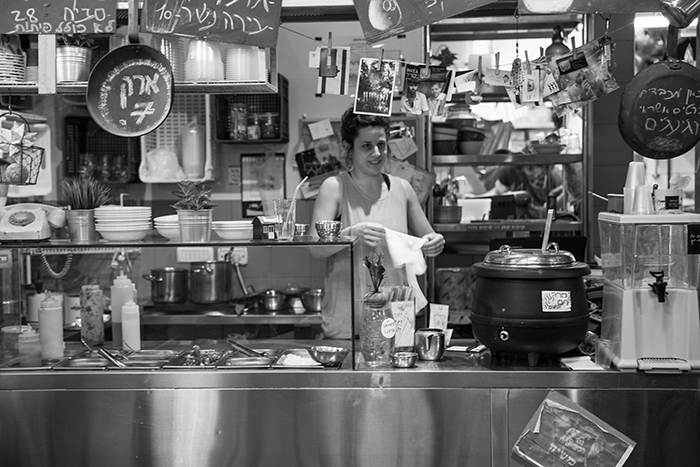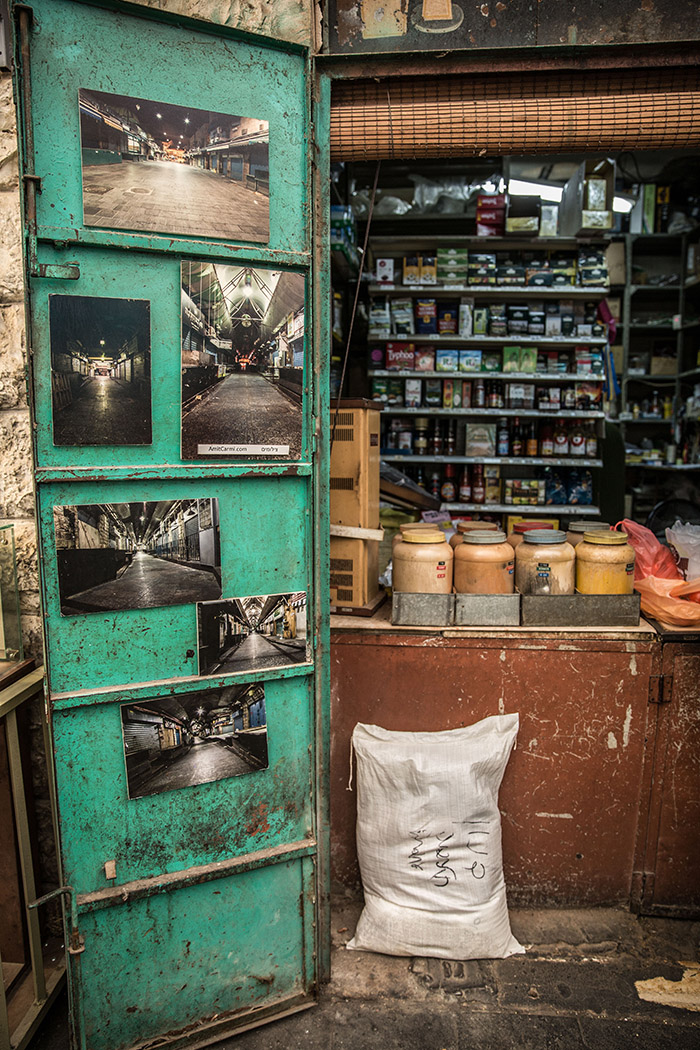Ottolenghi’s famous hummus recipe from Jerusalem

If you follow my blog you will know that I had an exceptional experience in Israel in January and I still haven’t recovered from the most amazing meals I enjoyed there. I also ate a fair amount of hummus, because when you are in Jerusalem, that is what you do. The best version of what we ate was at a tiny cafe just outside the Machane Yehuda Market. It was smooth and creamy with a delicious flavour and served with pita bread, falafel and a few pickles and condiments.






I have made many hummus recipes before but always took a shortcut and used canned chickpeas. I’ve added roasted beetroot to it, made it from peas and even did a pizza-flavoured version which was really delicious. Please don’t judge. Utterly unauthentic but I loved playing around with the different flavours and they all tasted great.
Since my visit to Israel and coming so up close and personal with hummus and seeing how the ownership of this dish is so fiercely contested, I knew I needed to make it the proper way. I turned to Yotam Ottolenghi and Sami Tamimi and their beautiful and inspiring cookbook Jerusalem. I mean if anyone knows how to make the stuff it will be them. Their basic hummus recipe is legendary and even appears in the Food 52 Genius recipes cookbook – which I am steadily working my way through.
My thoughts on the recipe:
I stuck to the recipe precisely apart from leaving the chickpeas to soak for two nights vs one (I don’t think this would have impacted on the outcome though). I also cooked my chickpeas for 30 minutes. They recommend between 20 and 40 and I found at 30 they were falling apart.
They add a teaspoon of baking soda which shortens the cooking time, but I have heard that this is not necessary. They also processed a lot quicker than the recipe timing indicated and I found this much quicker than canned chickpeas in general which seem to take forever to go smoothly.
They advise that you can play around with the flavours of this basic hummus and add cumin, more lemon juice or less tahini to suit your taste. Next time I will definitely use less tahini (probably half the amount) as I found the full cup very dense. I had brought back a jar of high-quality tahini from Israel but I’m not sure if it’s of the light variety or not. I added a smidge more lemon juice as I felt it needed the acidity, but overall despite the taste being bang-on perfect and reminding me or Jerusalem, the texture was not as light as I had hoped. I will add cumin next time too and will also cook a few extra chickpeas to reserve, once cooked, to add to the finished dish. I love the textural contrast this provides. That, or toasted pine nuts.
Oh, and I will only use dried chickpeas going forward. They are far superior and so inexpensive.
To find this recipe click here
I found the comments section in this New York Times article on the recipe very useful. People share amazing tips on hummus making and a few agree that this recipe is a bit heavy. If you are a geek like me and like to do tons of research before approaching a recipe, have a read. Someone also mentions that stirring Greek yoghurt through the final hummus lightens it up, and this is something I have been doing for years. It also makes it stretch further if you are catering for a crowd.
If you struggle to eat raw garlic like myself, I discoveredZahav’s recipe which has a unique way of infusing the garlic in lemon juice first, then straining it out before adding it to the mix. It also calls for an obscene amount of tahini which gives it an amazing silky texture. You will find my adaptation of these recipes with this roasted beetroot rendition.
You might also like my hummus with roasted cauliflower, sultanas, and cashews.

Find me on instagram

There is nothing better than the Israeli humus, especially from Jerusalem. Thank you for sharing this nice post!!!
I was actually reading about their recipe a few weeks ago. It sounded like a lot of work, so I have put off attempting it. It’s interesting to read your take on it!
Hey Sam, I found this recipe last year and it has become the holy grail of hummus recipes to me. Totally superior to canned chickpeas, I agree. And the texture is just heavenly. I also use half the tahini and more lemon juice. 🙂
Love love love that final picture! Was it a tiny hole-in-the-wall spice shop?
HI Ilse, yes, I think if I added half the tahini it would be lighter, but so much smoother than canned.
Hi Beryl – the final picture was actually taken inside the Mechane Yehuda market. It was a small spice shop. For some reason I just loved the door. It spoke to me (lol).
Hi Natasha – most of the work is actually not active cooking time, so it really could not be easier. literally pouring water over then dried chickepeas and then leaving them over night. The blending int the food processor takes about – 3- 5 minutes in total – max – so I would actually say this is a 5 minute hummus recipe. Squeezing the lemon juice and squashing the garlic was the most amount of efftor required here.
You’re right… I think it was the soaking part that put me off, but I don’t even know why. I spend so much time on “active” cooking and don’t even think about it haha.
I love how silky smooth this hummus looks, can’t wait to try it!
just came across your beautiful site or blog?.absolutely love Israel and hummus.having stayed on a kibbutz.
now going to wander around the rest of the site and keep coming back for inspiration
Ricky
Thanks Ricky – Im glad you stopped by and enjoy!
I have become a little obsessed with perfecting my hummus, using dry chick peas is a must, soaking overnight – a must, I then simmer for one hour then rinse the chick peas in cold water under a medium flow of water helps remove some (not all) of the husks, I then place the chickpeas in a salad spinner and this removes the rest of the husks, depending on the volume of chickpeas you are using, may mean you need to do a couple of batches. I find without the husks, the hummus is far smoother. Another modification I have made and all my family and friends rave about my hummus is, I use about 15 cloves of garlic, but I roast them in about 50 ml of olive oil and some salt, roast the garlic until it is amber coloured and let it cool, then add it while your processing the hummus, I find this completely takes away that raw garlic background taste and adds a little smokiness.
Oh wow Peter this sounds amazing. Really love your tip about the husks because I find my Hummus not as smooth as what I tasted in Israel. I’m defs going to try that. Also the garlic, I really find raw garlic so abrasive so I tend to add much less, but the idea of roasting it before is superb. Thank you!
Hi Sam, thank you for your kind words, I agree, the raw garlic is to me an unpleasant element of this dish, but by roasting it, you will notice a difference, my next off-piste experiment is going to be to confit the garlic, it will once again take away the raw flavour but still add a background taste, keen to hear your thoughts after you have tried me variation, I will let you know how the confit option goes. Cheers.
Can’t go wrong if you use half part tahini on one part humus.Enough lemon and water salt and pepper very little garlic to make a smooth paste.
Enjoy. Ellen
I’m a new subscriber/follower from Israel. I found your blog very randomly while searching for a recipe, and I’m so glad I did because I’m just in love with your blog – the creative flavor combinations, the style, everything. Good to read you’ve been here and enjoyed your time 🙂 you should come again in the future!
Hi Hila and I’m so glad you found me. I had such an amazing food adventure in Israel and would love to return one day.
There’s a whole mythology here are about removing the skins after the humus have been cooked, but normally it really is not done. It’s not practical–takes too much time. The best tahini (tchina, as we say it) is Har Bracha brand, it has a red label. The key is ETHIOPIAN sesame seeds, that is the difference. So if you find tchina with Ethiopian sesame, you are good. Finally, please please, don’t talk about adding yogurt to hummus. It’s impossible, it’s no longer hummus. For one thing, hummus is parve food and adding yogurt makes it dairy, so it would never be done in Israel.
Thanks for the input Andrea and good to know about the best Tahini. I think Hummus is universally accpeted and adaptations can be made. The beauty about cooking and sharing recipes is the evolution. I dont think Hummus is owned by Israel. Its a dish that is eaten throughout the MIddle East.